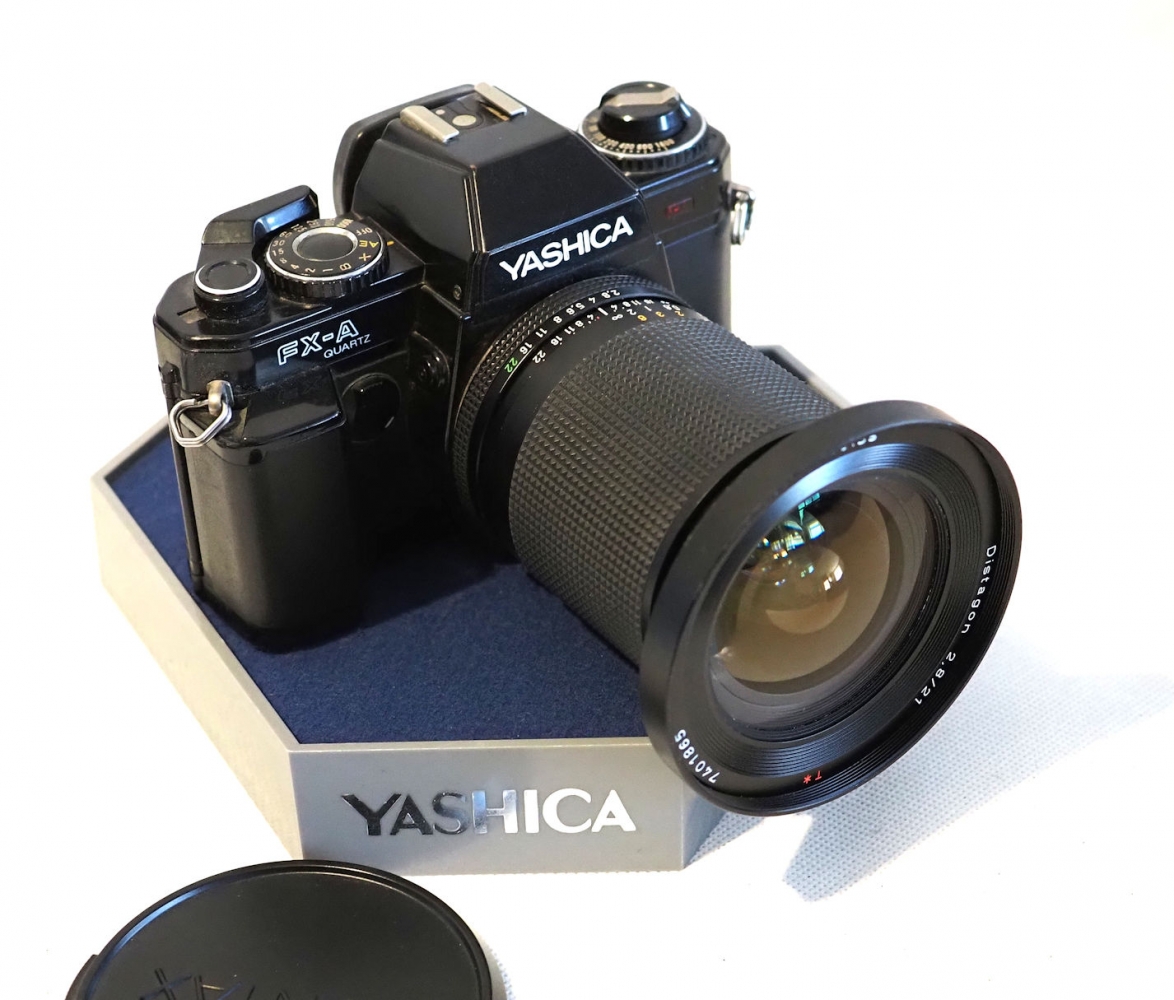 Posted: Sun May 28, 2023 12:11 pm Post subject: Zeiss legend and 1982 Yashica rarity Posted: Sun May 28, 2023 12:11 pm Post subject: Zeiss legend and 1982 Yashica rarity |
 |
|
biggles3 wrote:
There was always a lot of wholly misplaced snobbery about Zeiss lenses made in Germany/West Germany compared with those made in Japan. Even today a MMJ (Multi-Mode Japan) lens will command a lower price than an older, AE German version and often much lower than a MMG (Multi-Mode Germany) where all three versions of the same lens can be bought.
Perhaps the lens that did most to challenge the false perception of the Japanese-made ones being inferior was the 21mm f2.8 T* Distagon MMJ. The reviews which greeted its arrival created such a demand that Zeiss was obliged to switch production resources to produce the extra glass. Today, the lens still commands a high value. The first time I saw it in a glass case, I mistook it for a new mid-range telephoto, so long is its barrel. Its length is perhaps not surprising when you realise that it contains 15 elements in 13 groups and that includes internal focusing and a floating element.
What makes the photo of the lens unusual is the camera to which it is attached: the uber-rare Yashica FX-A. I first saw it, alongside the Contax 137AF and 3 Zeiss AF lenses, at Photokina in 1982. Sadly for the photographic world (and ultimately both camera brands) this was at the time that Kyocera was in the process of acquiring Contax/Yashica. They abandoned the Contax AF system (which could actually use the same C/Y bayonet mount, unlike the much later N-series) and cancelled the Yashica FX-A. Luckily, about 800-1000 or so FX-As had already been manufactured and the majority were bought by US Government agencies but a small number made it across to Europe; none was sold in Japan. What made the FX-A unique was its use of Honeywell's Focus Confirmation module. It is still easy to use - when looking through the viewfinder there are three symbols in a line - with the centre lighting green for correct focus and the two outer ones showing a red for under- or over- the correct focus. It all pre-dates the Contax RX's Digital Focus Indicator.
#1

_________________
Contax RTS/Zeiss lens fan and constant user along with my Mamiya RZ67 ProII. Favourite lens: Zeiss Planar 55 f1.2. |
